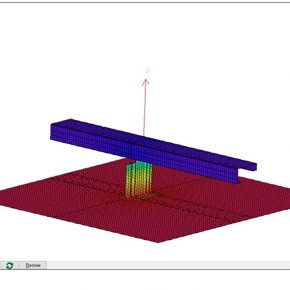
Hot melt roofing: follow on with respect
Guest post by Simon Hancock, MIoR, technical manager of Protan UK.
Ask yourself, especially in today’s world where we are increasingly taking into account site safety, environmental considerations, is it sensible to have boiling tar at height? One could allege it’s almost Medieval, the sort of things knights would pour from the battlements.
But anyone in the roofing, construction industry knows, it’s still common practice. Hot melt roofing systems are actually growing in popularity, largely because of their resistance to damage by subsequent (follow-on) trades. And site damage by follow-on trades doesn’t just affect industrial roofing, it affects flooring, walling too, and I’m sure a myriad other areas of the build process.
We are all under so much pressure to complete projects within tight budgets and time frames, that even the few extra seconds or minutes to apply a little care no longer matter, in where we are walking, manoeuvring what we are carrying, having to install.
The prevailing excuse is that it is up to site managers to address these issues. But is it?
What happened to basic respect, common courtesy for other people’s work, other people’s money? I may be old fashioned, but we should all take pride in our work, and that extends to how we prepare, and finish, on site. Be professional.
Taking care can actually yield dividends. Consciously or subconsciously, decisions are made not just on the ‘bottom line’ on the quote. There will be a thought process that takes into account the hidden cost- it may be cheap, but will there be a significant extra cost addressing remedials, repairing the damage caused? If so, then the cost isn’t quite so cheap…. There is, therefore, a financial incentive to take care, pride: it helps assure a continuation of work!
That impacts on site safety, be it avoidance of trip hazards, injury because someone’s left a plank or nail where it shouldn’t be, through to the boiling tar swinging in the air as it’s craned onto the roof. It impacts too on the environment, reducing the amount of temporary protective materials needed, the quantity of site debris, and again eliminating the need for that cauldron of boiling tar sending hydro carbons into the atmosphere.
So next time, just stop, think, and take a little care: the world will benefit!
Latest news

26th July 2024
Enfield Speciality Doors completes world-class project for Atlas Copco HQ
A rundown office and warehouse building completely transformed into a modern headquarters for Atlas Copco has been fitted with more than 120 internal fire doors from Enfield Speciality Doors.
Posted in Access Control & Door Entry Systems, Articles, Building Industry News, Building Products & Structures, Building Systems, Case Studies, Doors, Interior Design & Construction, Interiors, Posts, Restoration & Refurbishment, Retrofit & Renovation, Security and Fire Protection, Sustainability & Energy Efficiency, Timber Buildings and Timber Products, Wooden products
26th July 2024
Abloy UK launches new white paper
Abloy UK, a leading provider of security and access control solutions, has launched a new white paper.
Posted in Access Control & Door Entry Systems, Architectural Ironmongery, Articles, Building Industry News, Building Products & Structures, Building Services, Doors, Facility Management & Building Services, Health & Safety, Information Technology, Innovations & New Products, Publications, Research & Materials Testing, Security and Fire Protection
26th July 2024
MCRMA Member Profile: David Roy, Director of Roofconsult
David Roy of MCRMA member company Roofconsult has more than 50 years’ experience to draw upon working in the building envelope sector and a unique perspective on how it has changed in that time.
Posted in Articles, BIM, Infrastructure & CAD Software, Building Associations & Institutes, Building Industry News, Building Products & Structures, Building Services, Building Systems, Cladding, Information Technology, Restoration & Refurbishment, Retrofit & Renovation, Roofs, Walls
26th July 2024
Strand: Enhancing Door Functionality and Safety
Craig Fox, Sales Director for Strand Hardware, outlines how door industry professionals might apply door limiting stays…
Posted in Architectural Ironmongery, Articles, Building Industry News, Building Products & Structures, Building Services, Doors, Facility Management & Building Services, Health & Safety, Restoration & Refurbishment, Retrofit & Renovation
 Sign up:
Sign up: